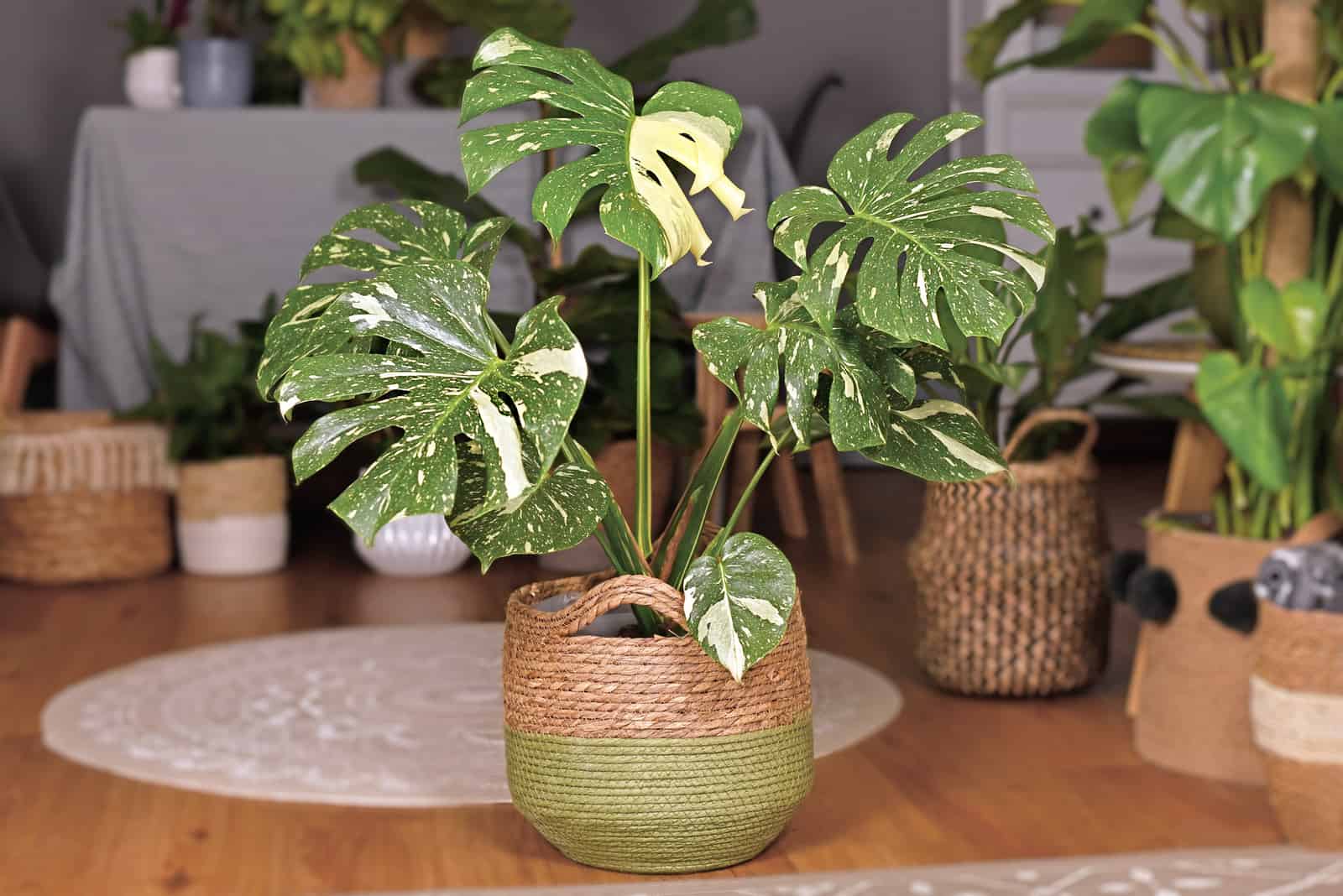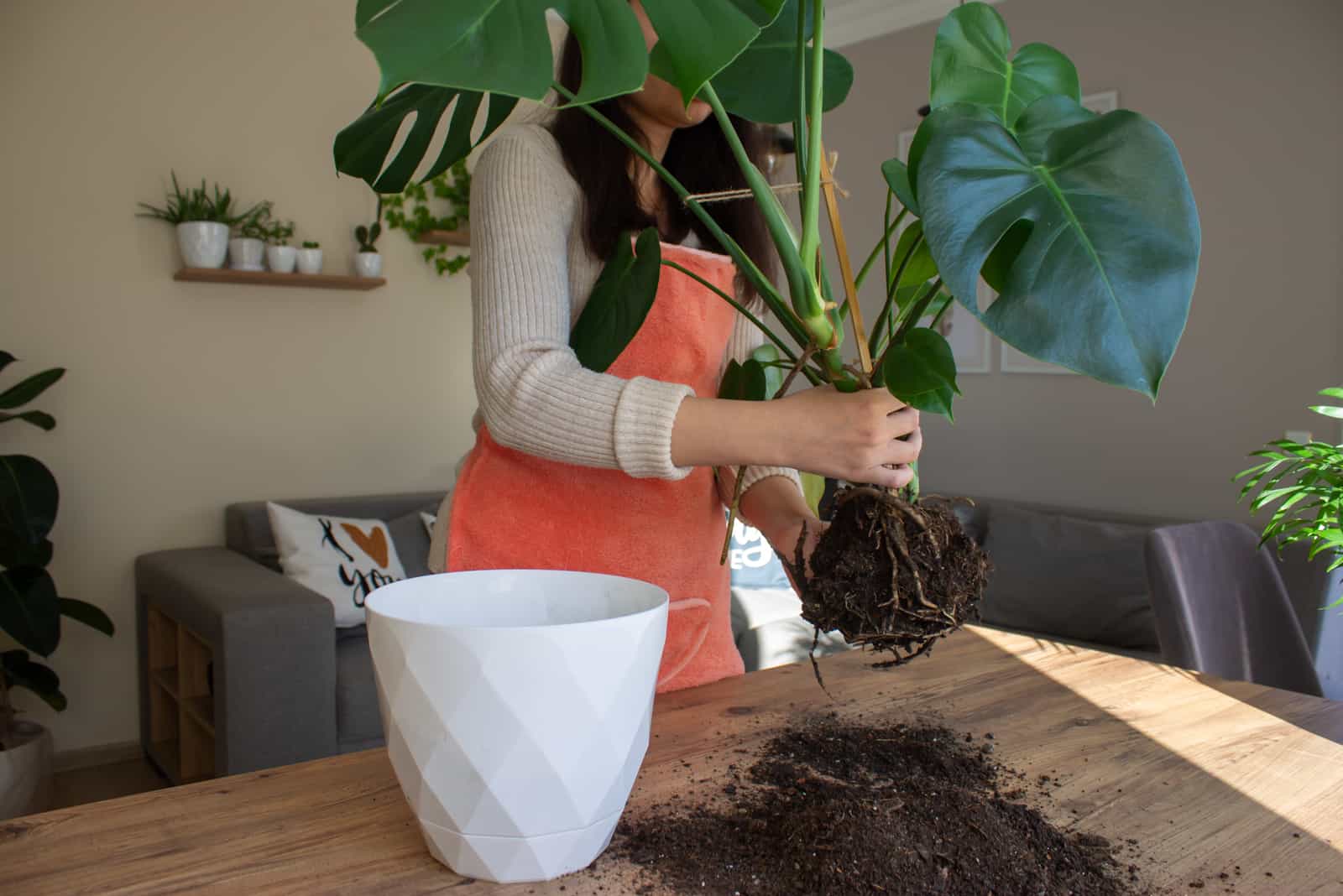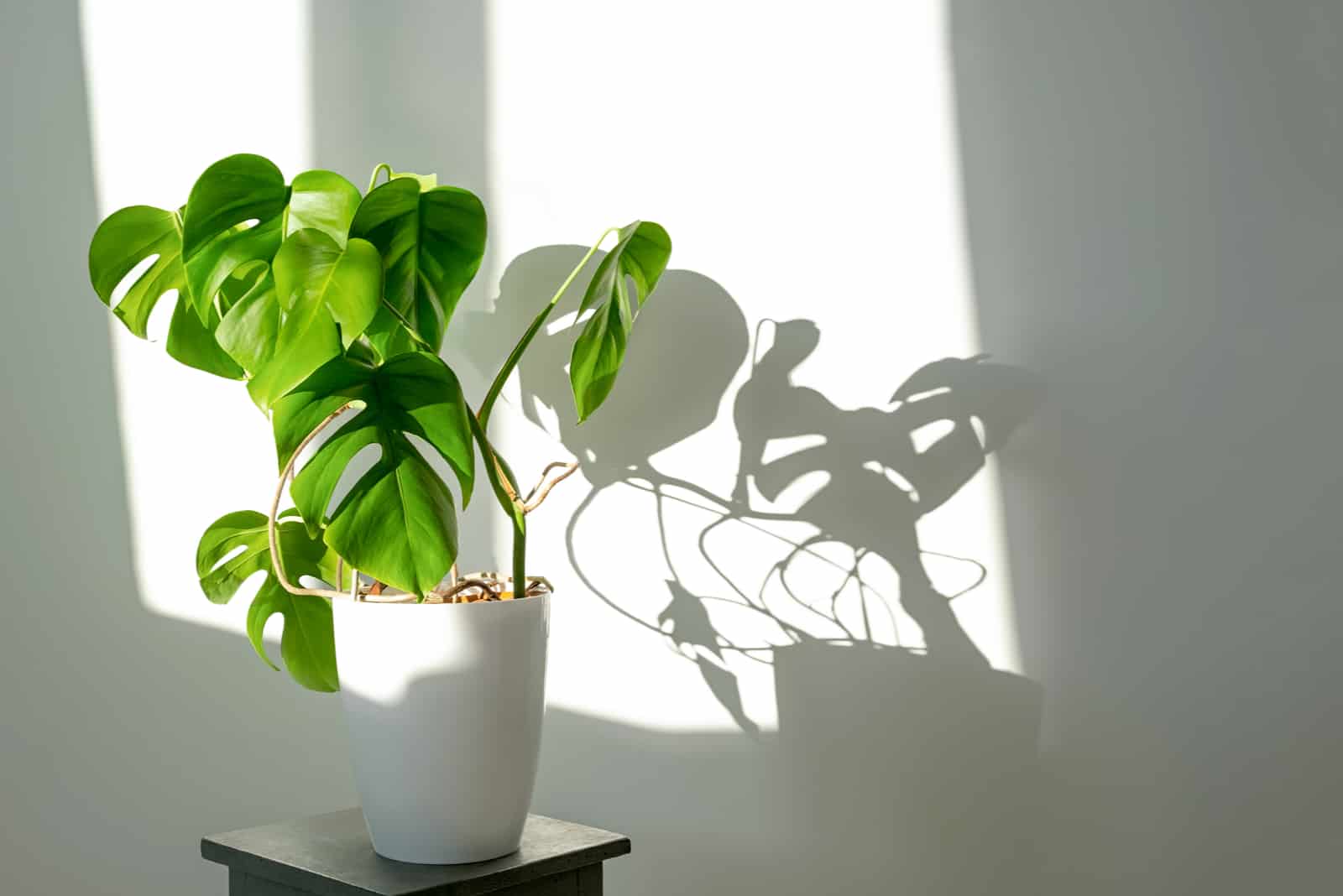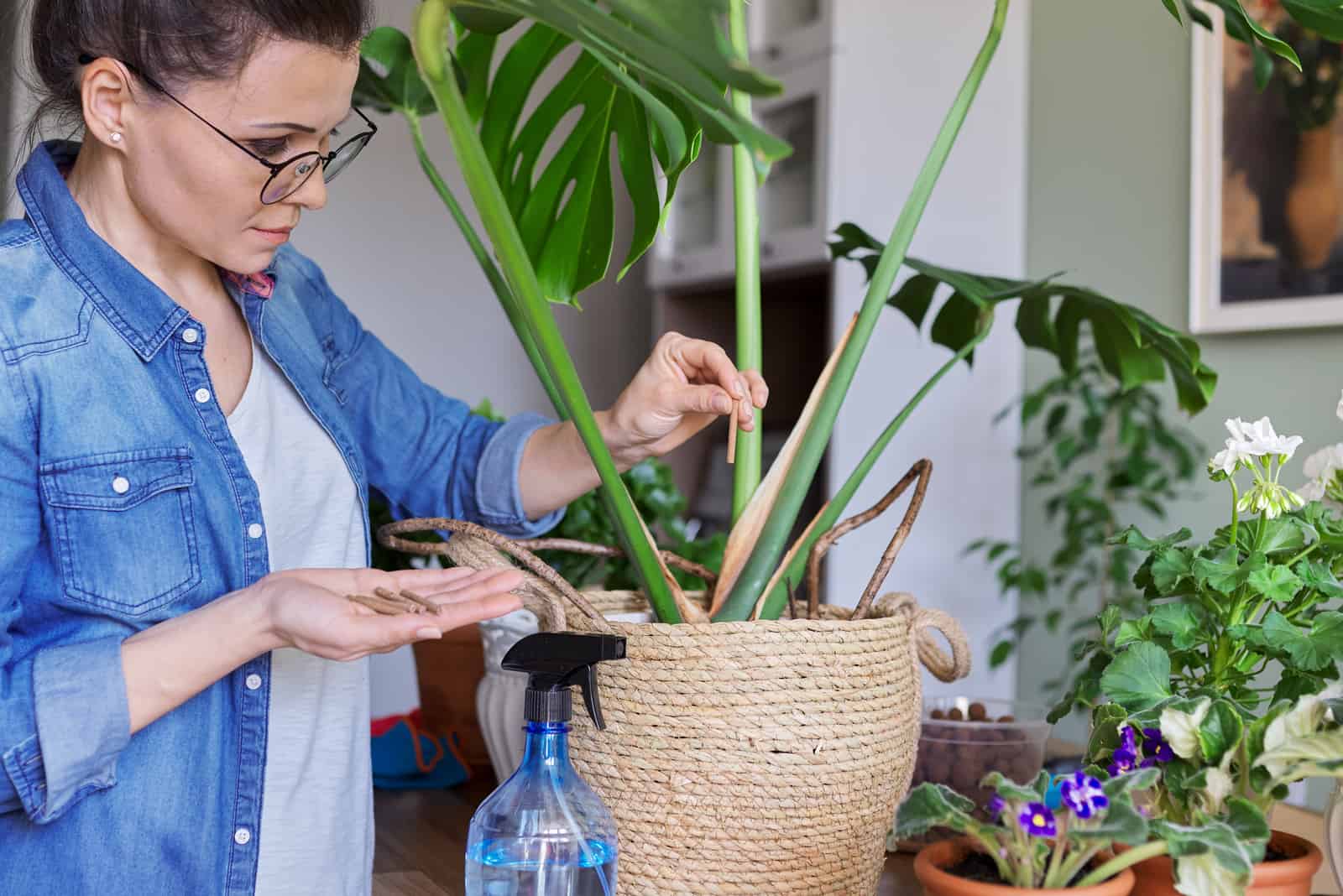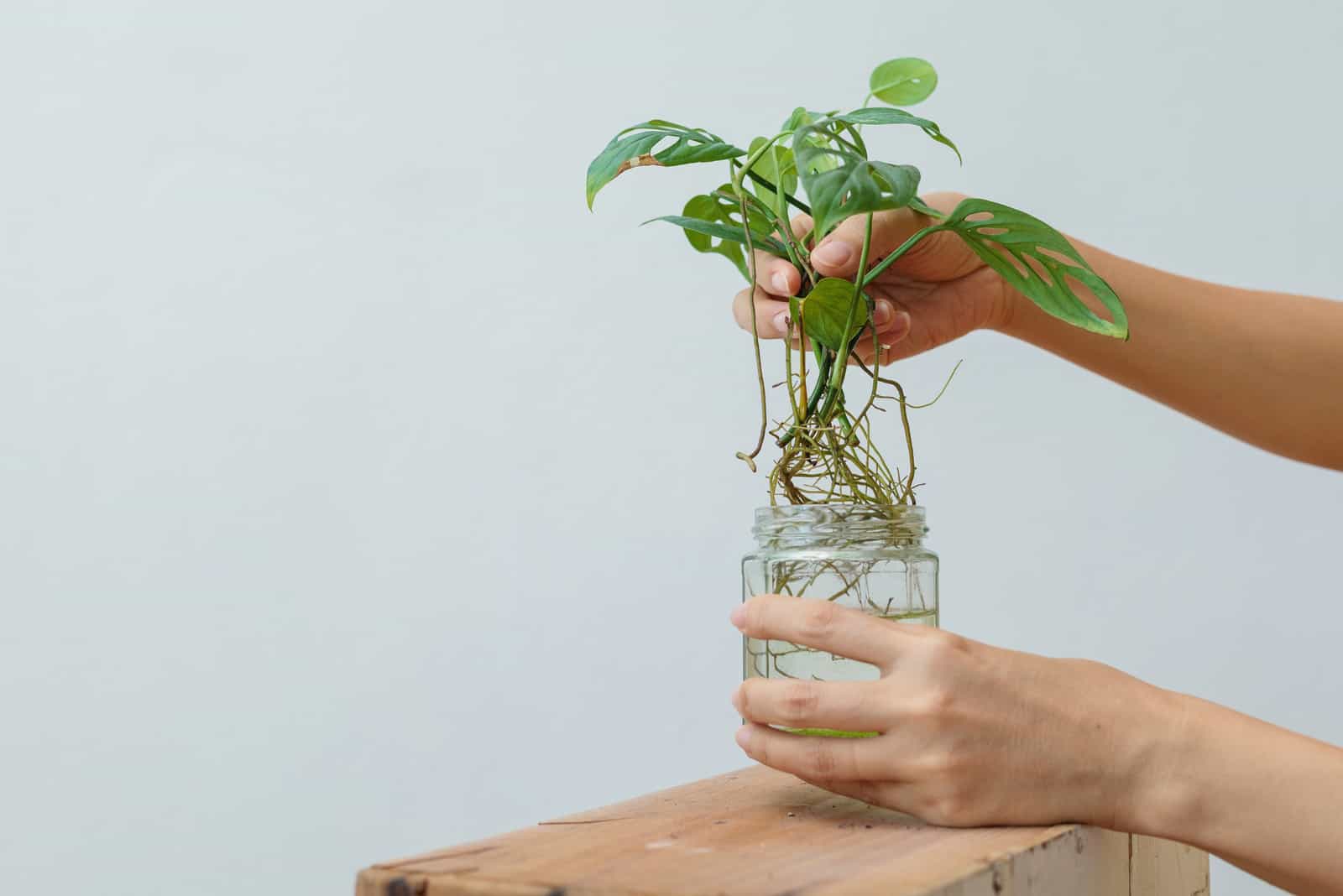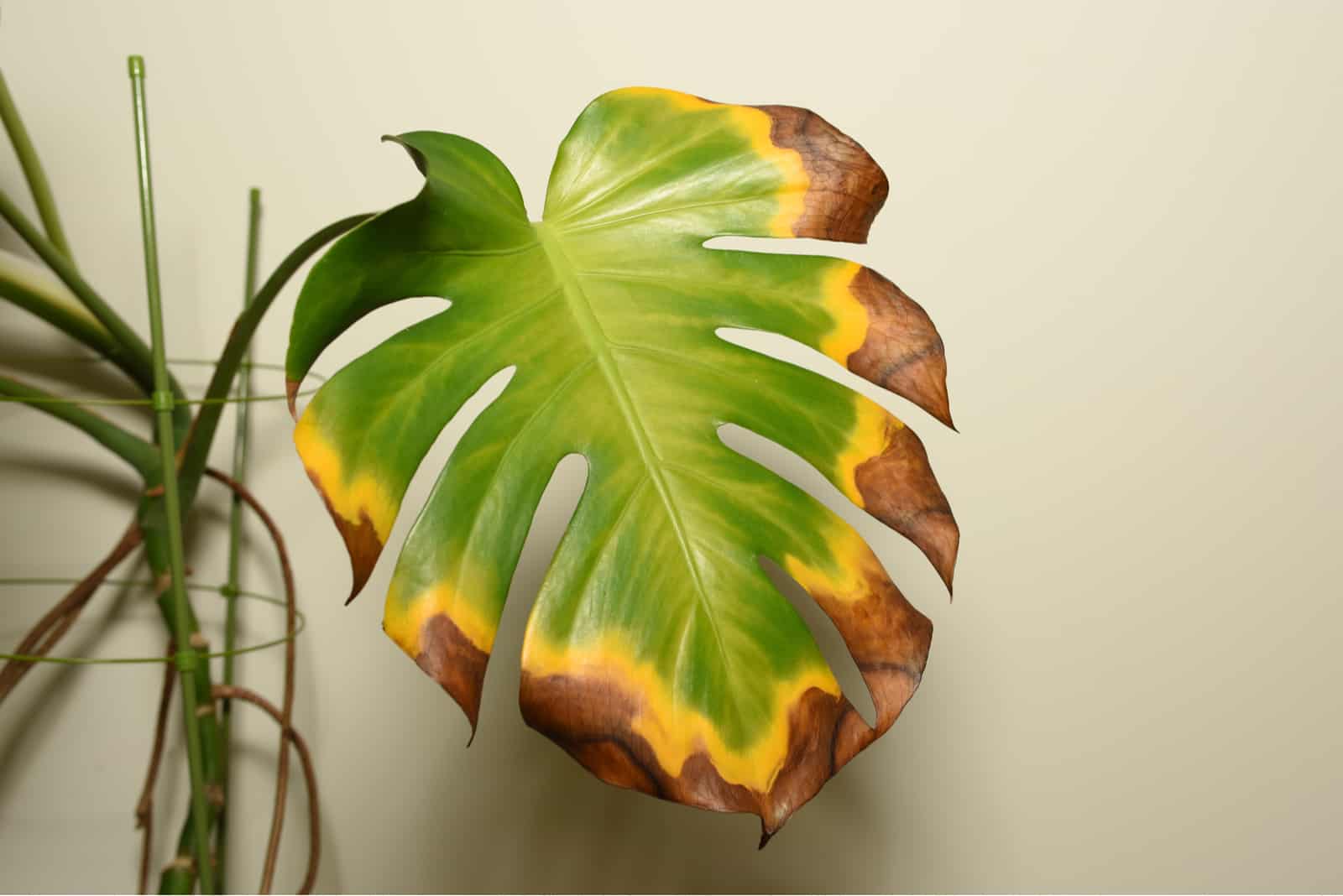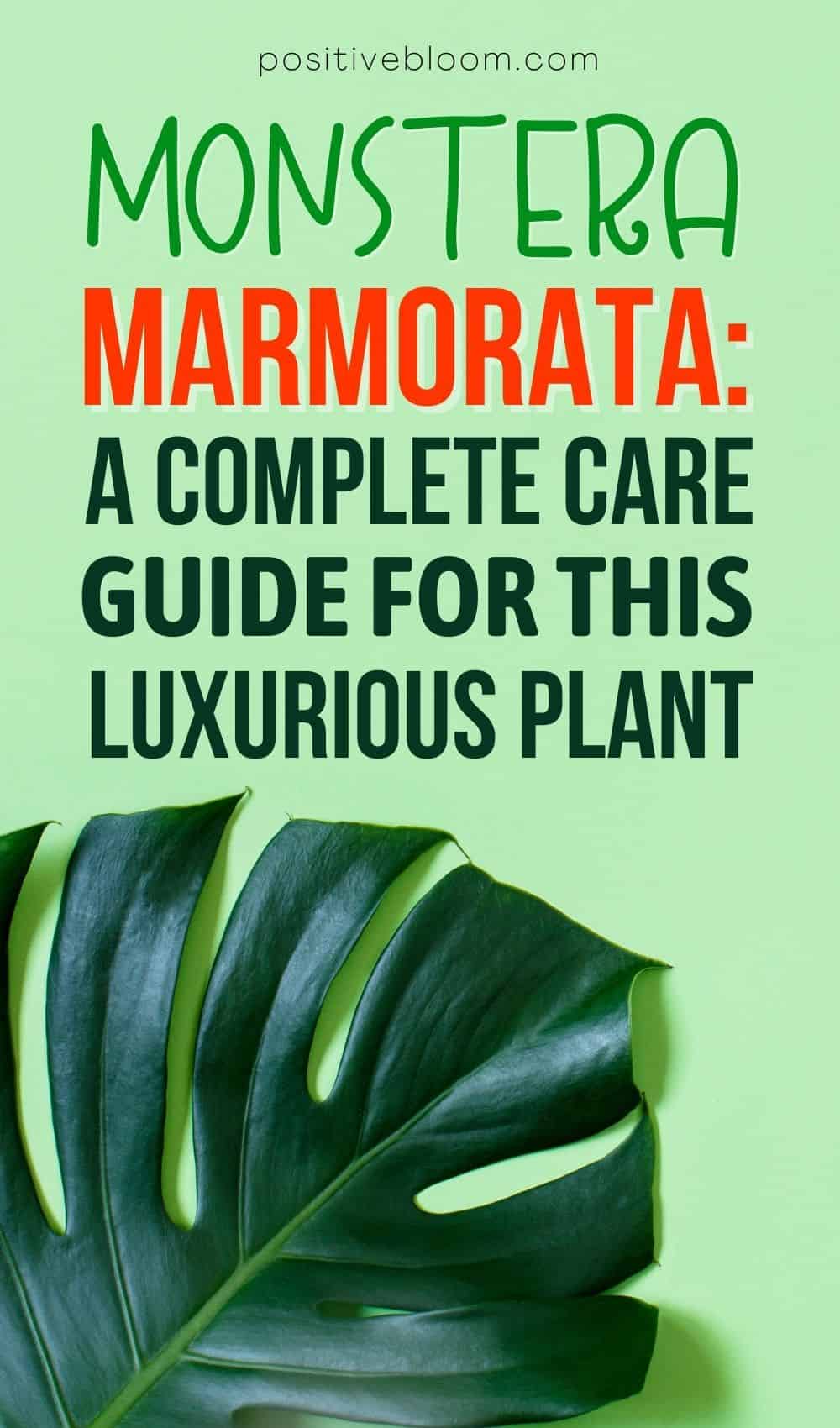Whether you are a plant enthusiast or a collector of truly rare plants, you might have heard the names Variegated Monstera Aurea, Monstera Deliciosa Aurea, Monstera Borsigiana Aurea and Monstera Marmorata, Golden Splitleaf Philodendron, and Monstera Thai Constellation…
But, guess what?
All of these names refer to the same plant!
The only difference between them is the color of leaves, otherwise they’re the same.
The Monstera Marmorata is a philodendron known for its distinctive, yellow split leaves, and this unique feature is the main reason they are such a popular plant.
If you have been lucky enough to find a Monstera Marmorata, read the rest of this article to learn how to take care of it and much more.
About Monstera Marmorata
The Monstera Marmorata, a member of the Araceae family, is a tropical plant originally found in Central America.
This philodendron grows unique, yellow variegated leaves with splits in them. They resemble Golden Pothos and Epipremnums because of their leaves.
Nowadays, this plant is on the most wanted list among plant collectors. Seriously! If you want to order one online, you will have to wait a very long time for your plant to arrive.
The reason is that the Monstera Marmorata is a project plant, which means they need time to be established before being sent to buyers.
But when you see those magnificent, golden leaves with your own eyes, you’ll know it was definitely worth the wait!
Monstera Marmorata Plant Care
The best way to take care of a Monstera Marmorata is by mimicking its tropical environment. You should pay particular attention to humidity levels, light requirements, and temperature.
Check out our Monstera plant care guide below to learn what your new plant needs to thrive.
1. Soil
The Monstera Marmorata loves well-draining soil that won’t retain moisture and lead to root rot.
The best potting soil is the same for all philodendrons; it consists of perlite, sphagnum moss, and universal aroid mix.
You can use this soil for other plants as well, such as anthuriums or alocasias.
2. Light requirements
Your monstera plant will thrive in an indirect, bright light.
You should avoid direct light because it will burn the plant leaves and cause them to lose their unique variegation.
However, it also requires a little sun for its green leaves to perform photosynthesis.
The best location for your indoor plant would be near a window, but keep in mind that this window should not be positioned in direct sunlight.
3. Temperature
As this is a tropical plant, it enjoys being in warm temperatures.
The Monstera marmorata is not frost hardy, so you should keep it inside during cold winters.
The best temperature for your plant ranges between 18 and 24 degrees Celsius.
You should also keep the temperature consistent because the Monstera Marmorata doesn’t like temperature fluctuations.
4. Watering
Watering a Monstera Marmota can be tricky.
This plant doesn’t like soggy soil, but it won’t be too thrilled about having dry soil for too long either.
The best thing to do is check if the soil has fully dried before watering. You can use wooden chopsticks or simply check with your thumb.
The soil will dry quickly during the summer, however it will need more time to dry out during the winter, which means it will probably need to be watered more during summer.
When watering, make sure that the water has reached the roots. Remove excess water from the bottom of the pot.
This way, your plant will get just the right amount of water it needs to be healthy and happy!
5. Fertilizer
The Monstera Marmorata is not picky when it comes to fertilizers. You can use universal fertilizer – not the cheap one though!
Your high-class plant requires high-quality fertilizers and nutrients.
If you live in a region with no winter or cold weather, then you should fertilize the plant monthly to keep it growing.
However, in regions with cold weather the growing season is much shorter, which means you should only fertilize it once a month, but only during the growing season!
6. Humidity
This is a tropical plant, and of course it loves higher humidity levels.
But don’t worry if you live in a region with low humidity levels because this plant can tolerate low levels of humidity. Make sure not to keep it under 40%, otherwise its leaves will turn brown and crispy.
It would be best to keep levels at about 65% or above. You can always buy a humidifier or mist the plant to achieve this level.
7. Pruning
As the leaves are the most distinctive features of this plant, you should avoid frequent pruning.
Only remove the leaves if they are damaged or if they change color to brown or yellow.
The size of a Monstera Marmorata depends on the way it was grown; it can grow up to 18 feet tall if grown outside.
Indoors, it’s a lot smaller and can be grown in a hanging basket and pots. It will adapt to the environment and develop according to the provided resources.
This is a climbing plant, so you should provide it with some kind of support such as a moss pole to assist its growth. This will help the leaves grow larger and much more fenestrated!
Here is a video on how to properly prune a Monstera plant:
8. Propagation
You can propagate your monstera plant from stem cuttings.
You can choose either water or soil for propagation, it’s totally up to you! The outcome is the same for both.
Be careful when cutting the stem – make sure it has healthy leaves and nodes. Bury the node in soil, or submerge it in water.
If you are using soil, make sure that it’s moist. Avoid overwatering and keep your little monster somewhere warm and humid.
If you are using water, change it weekly and keep it in bright light. After the roots have grown about 3 inches, you can plant it in soil.
9. Repotting
You should be aware that the Monstera Marmorata is not a fan of repotting.
You should only repot the plant if its roots are coming out of the pot, or there is a risk of root rot due to overwatering.
It is not a fast grower, and you should repot it into a larger container after approximately 2 years.
I have repotted my monstera successfully, and I am very proud of it!
Common Problems With Monstera Marmorata
A monstera plant is not cheap, so you should definitely look after it and try to prevent common issues from happening so as to keep your plant growing and healthy!
Toxicity
The Monstera Marmorata contains toxins that are harmful to pets and humans, so you should definitely keep your kids and pets away from it!
People with sensitive skin should avoid touching the plant – if necessary, they should wear gloves.
Leaves turning yellow
When leaves turn yellow, it is usually a sign of overwatering.
Overwatering plants is a common issue, and should always be avoided as it can destroy the roots of the plant!
Everyone knows that roots are the foundations of every plant.
Keep a watering schedule according to the soil – check if it has dried before watering it, but do not keep the soil dry for too long!
Pest
Although your plant is a monster, it can be invaded by little insects and bugs, and once they’re in, they will reproduce quickly!
You should spray water or insecticide to prevent them from making a home out of your beautiful and expensive plant.
Who can blame them, right? I would also love to live on those golden, variegated leaves!
Another thing you can use to fight them off is neem oil – just spray it all over the plant, especially the leaves.
Frequently Asked Questions
What is the difference between Monstera Aurea Variegata and Monstera Borsigiana Albo Variegata?
The difference between Monstera Aurea and Borsigiana Albo is the color of the variegated leaves.
Monstera Albo Variegata has white variegated leaves, while Monstera Aurea has yellow variegated leaves.
Why is the Variegated Monstera Marmorata so expensive?
We all want what we can’t have, right?
The same goes for plants.
This rare, decorative houseplant is in such high demand because of its beautiful, yellow variegated leaves. These leaves bring a tropical spirit to your home, and make the living space look much more lively!
If you were planning on buying one, and are wondering about its sale price, it’s usually around 700 USD, but can go up to 1500 USD on Etsy with a phytosanitary certificate and shipping delivery usually included.
A Monstera adansonii can cost over 3000 USD! It’s like this plant is a designer piece among plants.
What is the rarest Monstera?
The rarest Monstera plant is the Monstera Obliqua because it looks like the skeleton of a plant! Seriously, there are more holes than there are leaves and stems.
This feature makes the Monstera Obliqua rare and in high demand, although it can sometimes be mistaken for Monstera Adansonii.
Final Thoughts
The Monstera Marmorata is truly wonderful and definitely worth the money.
Those amazing, variegated yellow leaves are so extravagant, and they will make your room look more lively and luxurious.
The Monstera Marmorata is a houseplant that is easy to take care of, simply provide it with well-drained soil and keep a constant, moderate temperature.
Pay attention to your watering habits; you should avoid over watering as it can lead to root rot!
Until next time!
Like this post? Share or pin it for later!

